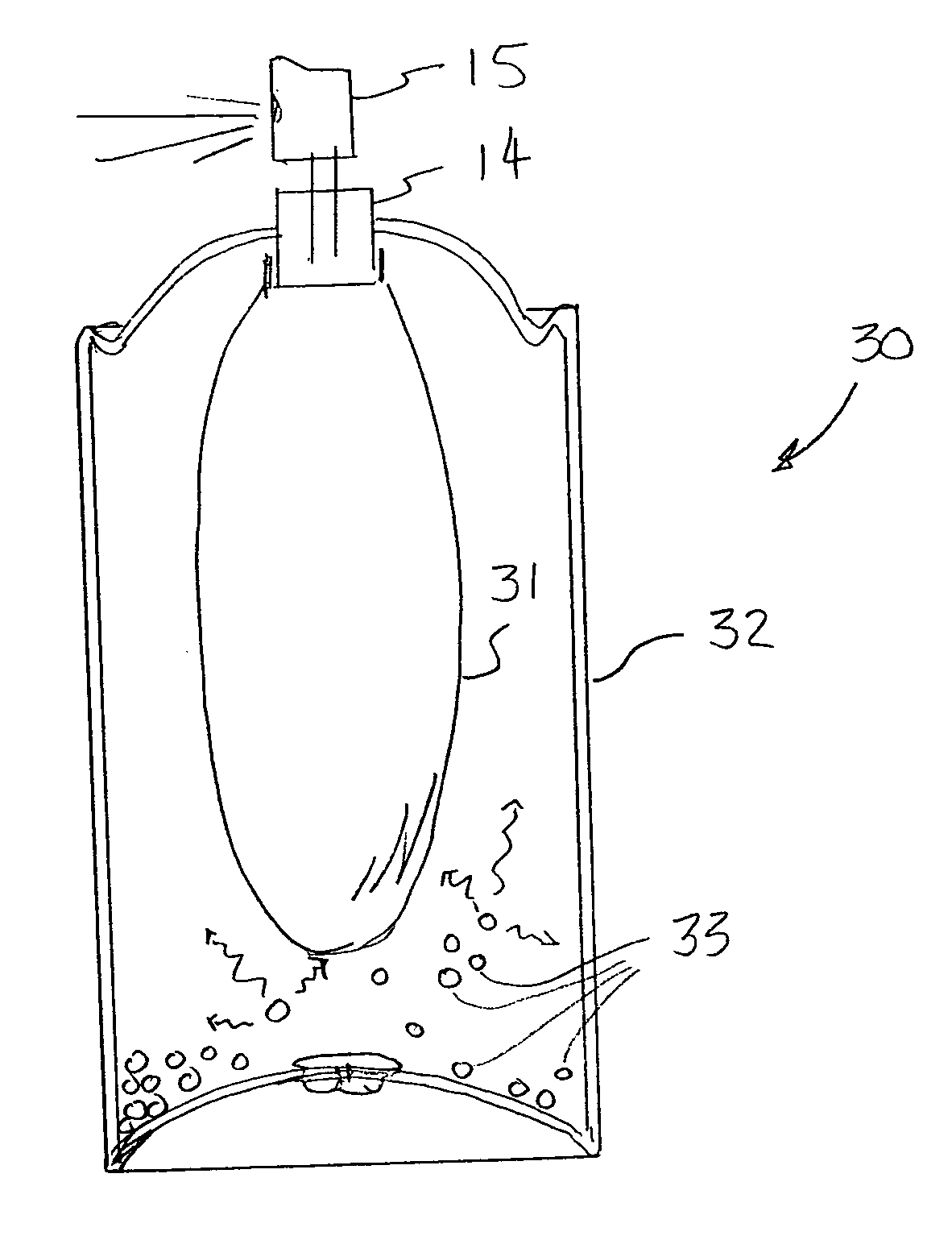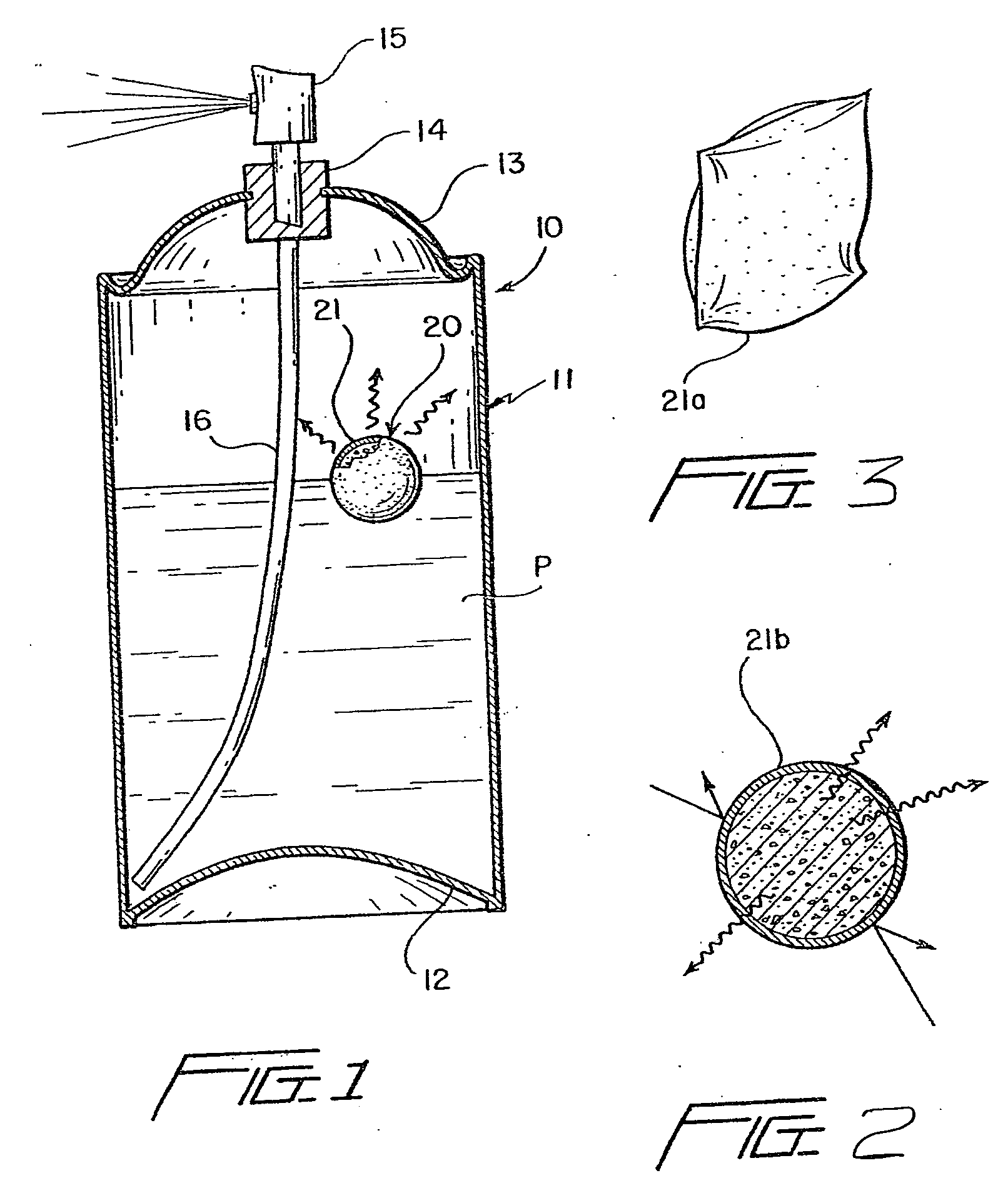Gas storage and delivery system for pressurized containers
a technology of gas storage and delivery system, which is applied in the field of pressurized containers, can solve the problems of reducing the pressure exerted by the propellant, limited use, and inability to disperse all the products from the container, and achieves better foaming, and consistent, uniform and acceptable spray patterns.
- Summary
- Abstract
- Description
- Claims
- Application Information
AI Technical Summary
Benefits of technology
Problems solved by technology
Method used
Image
Examples
Embodiment Construction
[0035] A first form of aerosol dispenser is indicated generally at 10 in FIG. 1. The dispenser includes a container 11 made of metal or other suitable material, having a bottom 12 and a top 13. A discharge nozzle assembly 14 is mounted on the top and includes a nozzle 15 that may be manually depressed to open and permit product P to be dispensed from the container through the nozzle. A dip tube 16 extends from the bottom of the container to the discharge nozzle assembly. As seen in this figure, the level of product in the container does not occupy the entire volume of the container, and the space above the product level is filled with a pressurized propellant gas to exert pressure on the product and force it through the dip tube and nozzle when the nozzle is depressed. The foregoing structure and operation are conventional.
[0036] In accordance with the invention, a storage body 20 of a gas-adsorbing material is placed in the container with the product to adsorb and store a quantity...
PUM
 Login to View More
Login to View More Abstract
Description
Claims
Application Information
 Login to View More
Login to View More - R&D
- Intellectual Property
- Life Sciences
- Materials
- Tech Scout
- Unparalleled Data Quality
- Higher Quality Content
- 60% Fewer Hallucinations
Browse by: Latest US Patents, China's latest patents, Technical Efficacy Thesaurus, Application Domain, Technology Topic, Popular Technical Reports.
© 2025 PatSnap. All rights reserved.Legal|Privacy policy|Modern Slavery Act Transparency Statement|Sitemap|About US| Contact US: help@patsnap.com



